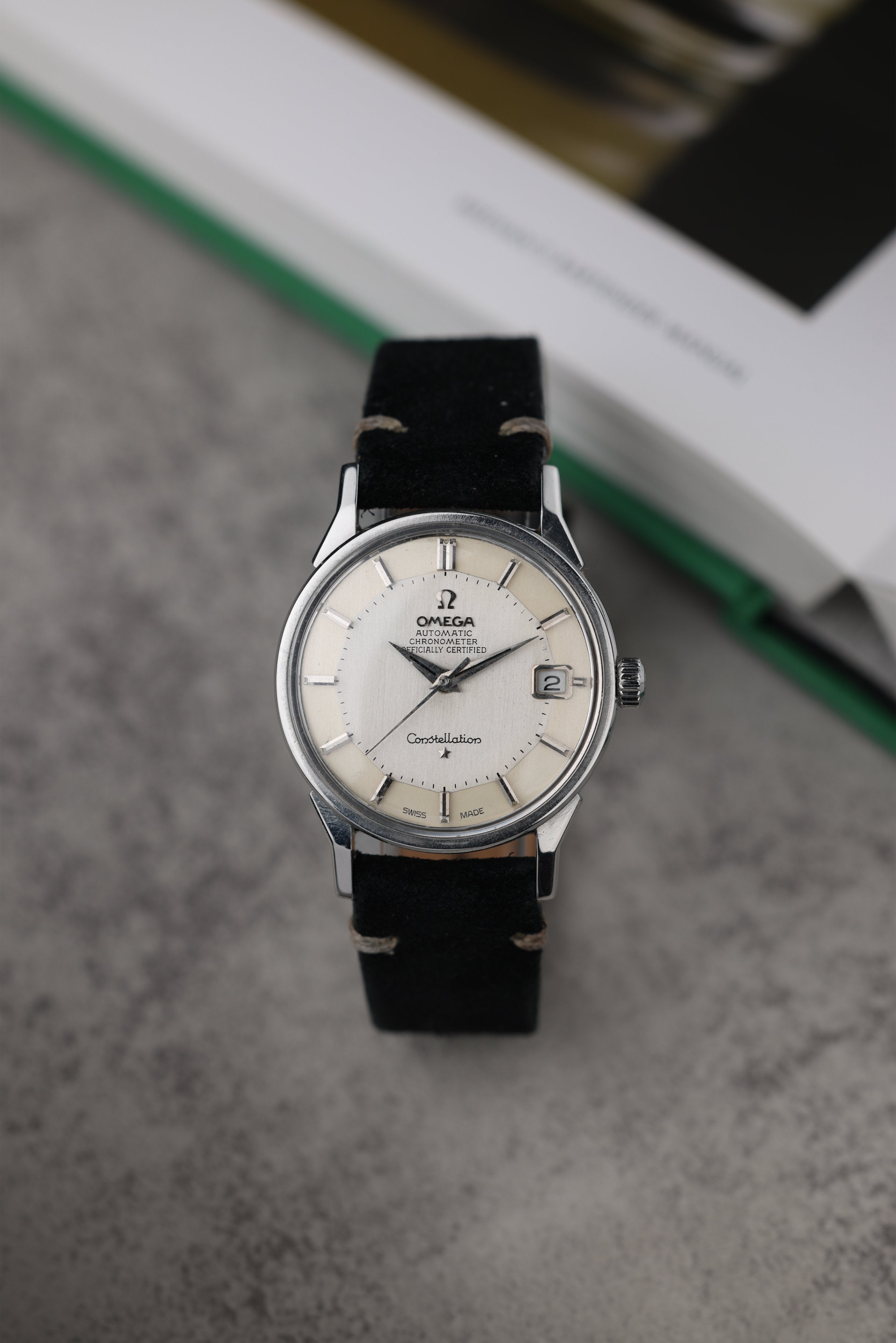In 1952, Omega created the Constellation as its flagship dress watch—a statement of intent that precision and elegance could coexist in perfect harmony. By 1970, when this particular example was crafted, the collection had evolved into something truly special: a chronometer-certified timepiece that wore its technical excellence as elegantly as a Savile Row suit.
The reference 168.005 represents the mature expression of Omega's pie-pan design philosophy. That distinctive dial construction—with its raised outer edge sloping gently toward the centre—wasn't mere decoration. It was a sophisticated solution that allowed applied indices to sit proud of the dial surface whilst maintaining perfect proportions. The result is a watch face with genuine depth and character, quite literally adding another dimension to timekeeping.
Those angular "dog-leg" lugs aren't accidental either. They're the work of Gerald Genta during his tenure at Omega, years before his more famous designs for other Swiss houses. Here, his touch is more restrained but no less masterful—creating visual interest through geometric precision rather than bold statement.
The movement inside tells its own story. Calibre 564, produced from 1966 to 1969, represents the pinnacle of Omega's 500-series movements. This 24-jewel automatic chronometer features a genuine quickset date function—pull the crown to position two and it advances the date with each gentle tug. It's a complication that feels utterly modern, even five decades later.
The caseback bears the Geneva Observatory medallion with eight stars, each representing a chronometry competition Omega won during the 20th century. It's a reminder that this wasn't just a beautiful watch—it was a precision instrument that could have powered the space programme (and, in a different form, actually did).
At 34mm, this Constellation inhabits that sweet spot where vintage proportions meet contemporary sensibilities. It's substantial enough to feel serious on the wrist, yet refined enough for any occasion. The silver dial, with its subtle sunburst finish and applied markers, catches light beautifully—shifting between bright silver and warm champagne depending on the angle.
What was once Omega's flagship collection now represents remarkable value in the vintage market. Whilst everyone chases Speedmasters and Seamasters, the Constellation offers equal quality, superior chronometer credentials, and considerably more accessible pricing. It's the sort of watch that insiders collect—understated excellence that doesn't need to announce itself.
This particular example from 1970 captures the Constellation at its zenith: mature design, proven movement, and that ineffable quality that separates a good watch from a great one. It's a piece of horological history that you can actually afford to wear daily.



















